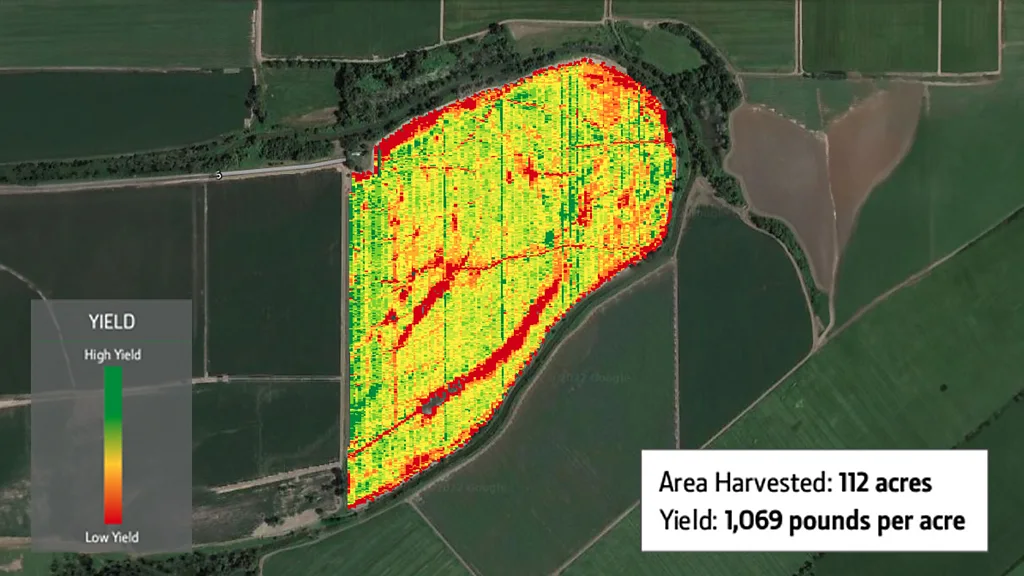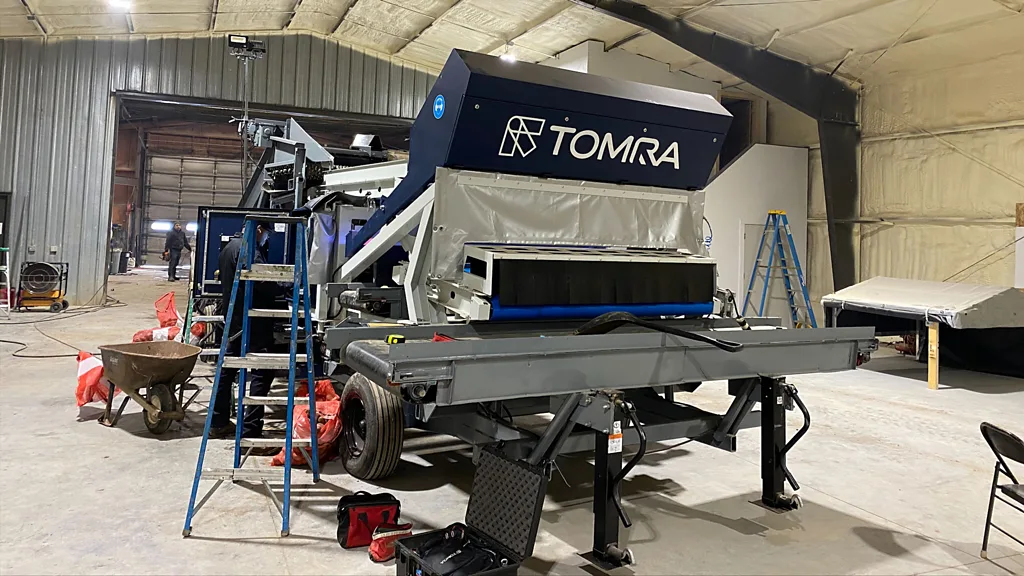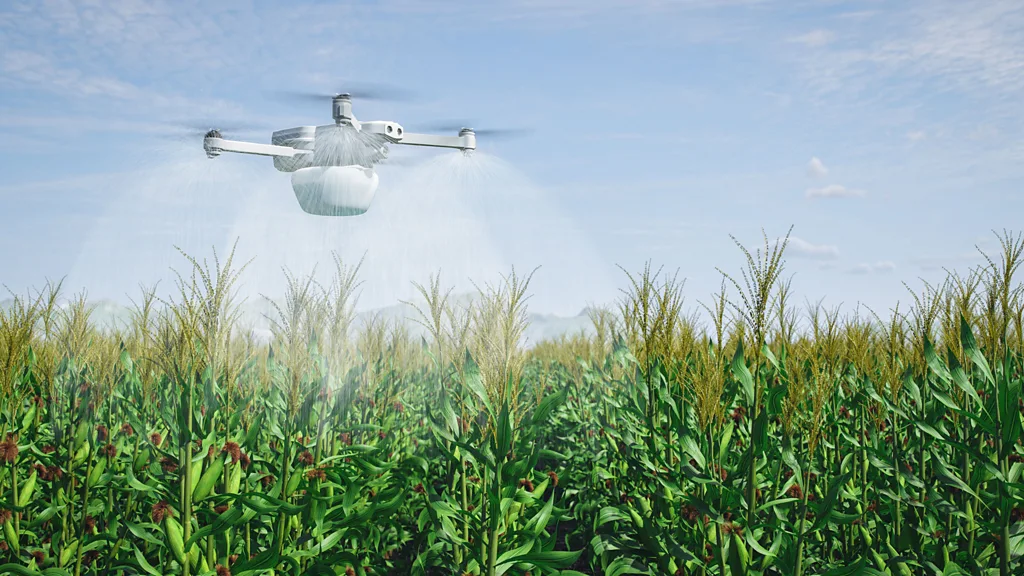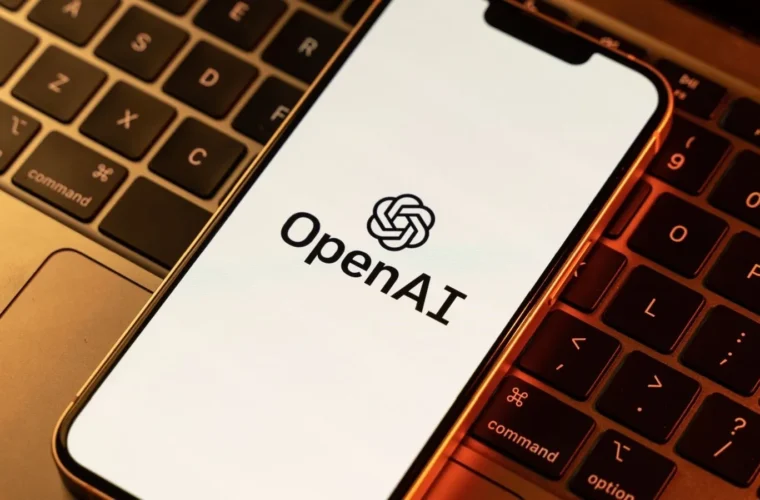In the heart of the American Midwest, a farmer stands in his field, smartphone in hand. He captures an image of a pest on a soybean leaf and uses an AI-powered program to identify the species and assess the threat. This scene is becoming increasingly common as American farmers turn to artificial intelligence (AI) to solve pressing issues in agriculture. This technological shift is not just a novelty but a necessity, driven by labour shortages and the urgent need to boost crop yields to feed a growing global population.
The labour crisis in agriculture
The U.S. agricultural sector is facing a severe labour shortage. The average age of an American farmer is now 60, and younger generations are reluctant to take over family farms, opting instead for less physically demanding and more lucrative careers. The immigrant labour force, which has traditionally filled these gaps, is dwindling as these workers seek better opportunities elsewhere. Emily Buckman, director of government affairs at the American Farm Bureau Federation, highlights labour as the number one concern for farmers today. To address these challenges, U.S. farmers are increasingly turning to AI and robotics.
Although AI has been used in agriculture for decades, such as auto-steering systems for planting crops, its adoption has accelerated rapidly in recent years. As of late 2021, approximately 87% of U.S. agricultural businesses were using some form of AI. The federal government is also encouraging this trend by providing financial incentives to develop and deploy AI technologies. The implications of widespread AI adoption in agriculture are significant. As the global population is projected to increase by two billion by 2050, agricultural productivity needs to rise by 70%. AI offers the potential to make farming more efficient and sustainable, ensuring that we can meet this growing demand.
Enhancing resilience with AI
The urgency of the climate crisis further underscores the need for technological innovation in agriculture. Erratic weather patterns and increasing temperatures threaten crop yields, making it essential to develop resilient agricultural practices. At Iowa State University, the AI Institute for Resilient Agriculture is working on creating AI-driven tools to enhance sustainability and profitability. Patrick Schnable, a professor at Iowa State, emphasizes the importance of using AI to mitigate the impacts of climate change on crop yields. One key area of focus is precision agriculture, which uses technologies like drones and sensors to monitor and manage fields with pinpoint accuracy. This approach reduces resource waste and increases efficiency. For instance, drones can assess water and pesticide levels, allowing farmers to address specific problem areas rather than treating entire fields. This precision helps conserve resources while maximizing crop yields.

Robotics is another frontier in agricultural AI. At the 2024 World Agriculture Expo in California, companies showcased various high-tech tools, including autonomous crop sprayers and AI-powered robots capable of picking berries with silicone “hands.” These innovations promise to alleviate labour shortages by performing tasks that previously required human workers. Hylio, a Houston-based tech company, has developed drones to spray fertilizers and pesticides over large areas. These drones can operate in swarms, controlled by a single pilot, significantly increasing efficiency. Hylio’s CEO, Arthur Erickson, believes this technology sets a precedent for the broader adoption of AI in agriculture. Similarly, Carbon Robotics has created the Laser Weeder, which uses infrared lasers to identify and eliminate weeds. This technology reduces the need for manual labour and minimizes the use of chemical herbicides, benefiting both the environment and farmers.
Balancing technology and human labour
While AI and robotics offer promising solutions, they also raise concerns about job displacement. Farm workers like Lulu Cardenas and Asuncion Ponce, who have spent decades working in the fields, fear that these technologies will replace their jobs. Cardenas, who has worked in California’s Central Valley for 20 years, feels a deep connection to the land and worries that machines cannot replicate the human touch. To address these concerns, some large-scale farms and advocacy groups are introducing training programs to help farm workers adapt to new roles as drone operators or programmers. Adrián Miramontes, a farm manager and Mexican immigrant, believes that workers can thrive alongside new technologies with the right training. He emphasizes the need to balance technological advancements with the workforce’s well-being.


The future of AI in agriculture
The rapid adoption of AI in U.S. agriculture reflects a broader trend towards integrating advanced technologies into traditional industries. Companies like John Deere are at the forefront of this movement, developing AI tools to help farmers optimize their operations. Sarah Schinckel, John Deere’s director of emerging technologies, sees a future where AI is an integral part of farming, helping to address labour shortages and increase productivity. As the world faces the dual challenges of a growing population and climate change, AI offers a path forward for sustainable and efficient agriculture. By harnessing the power of AI, farmers can continue to feed the world while adapting to an ever-changing environment. The journey is just beginning, but the potential of AI to transform agriculture is immense, promising a future where technology and tradition coexist to create a resilient food system.



